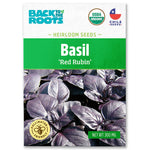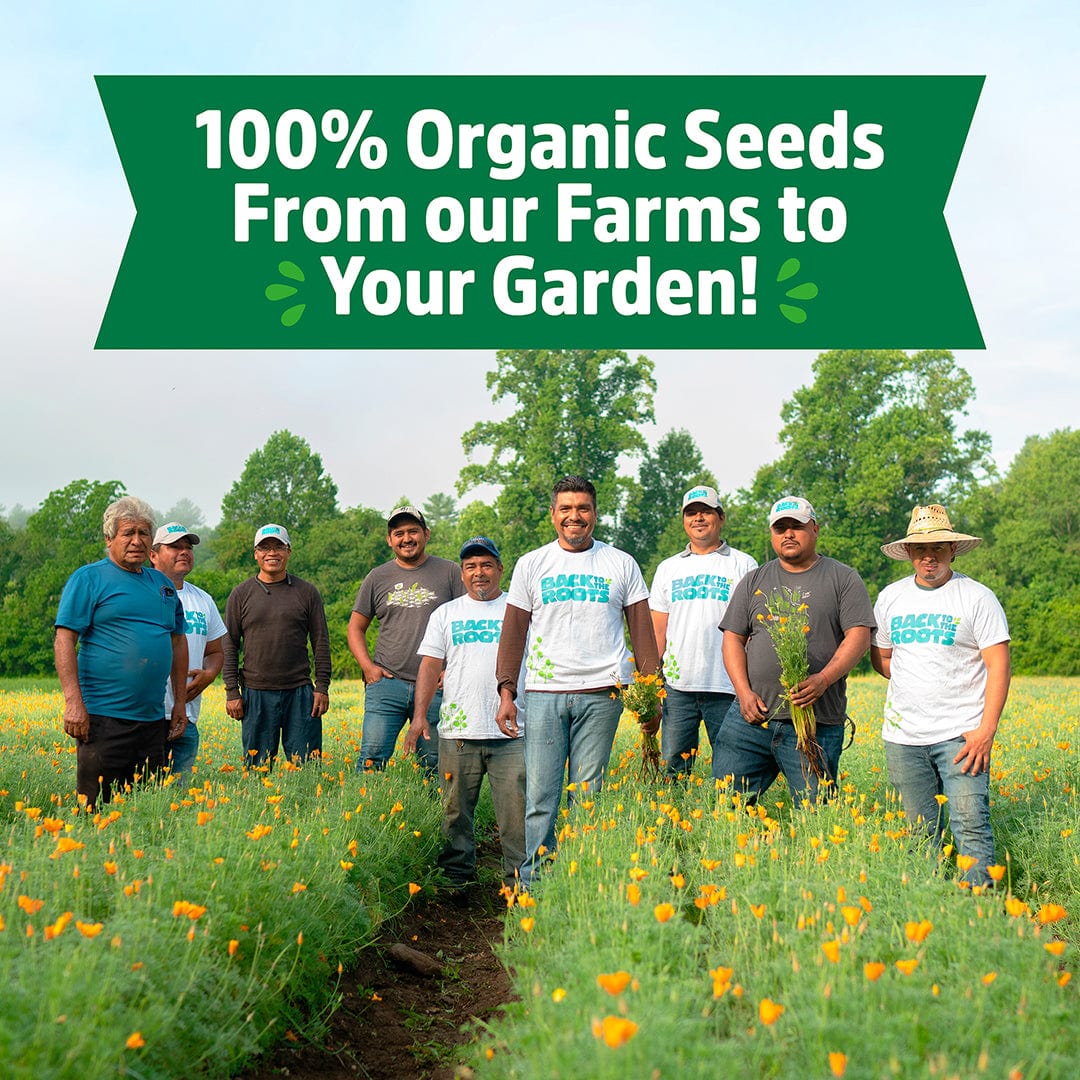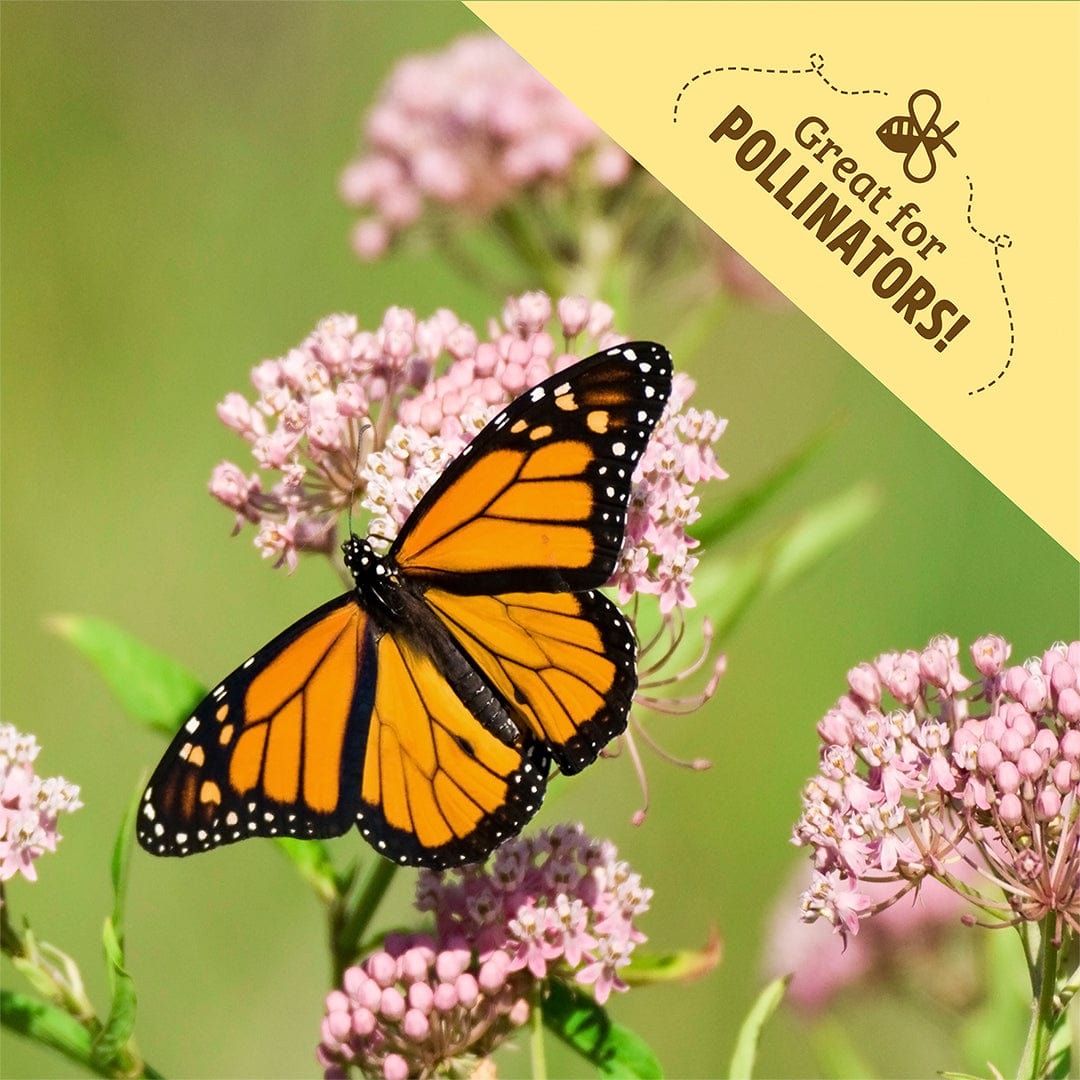
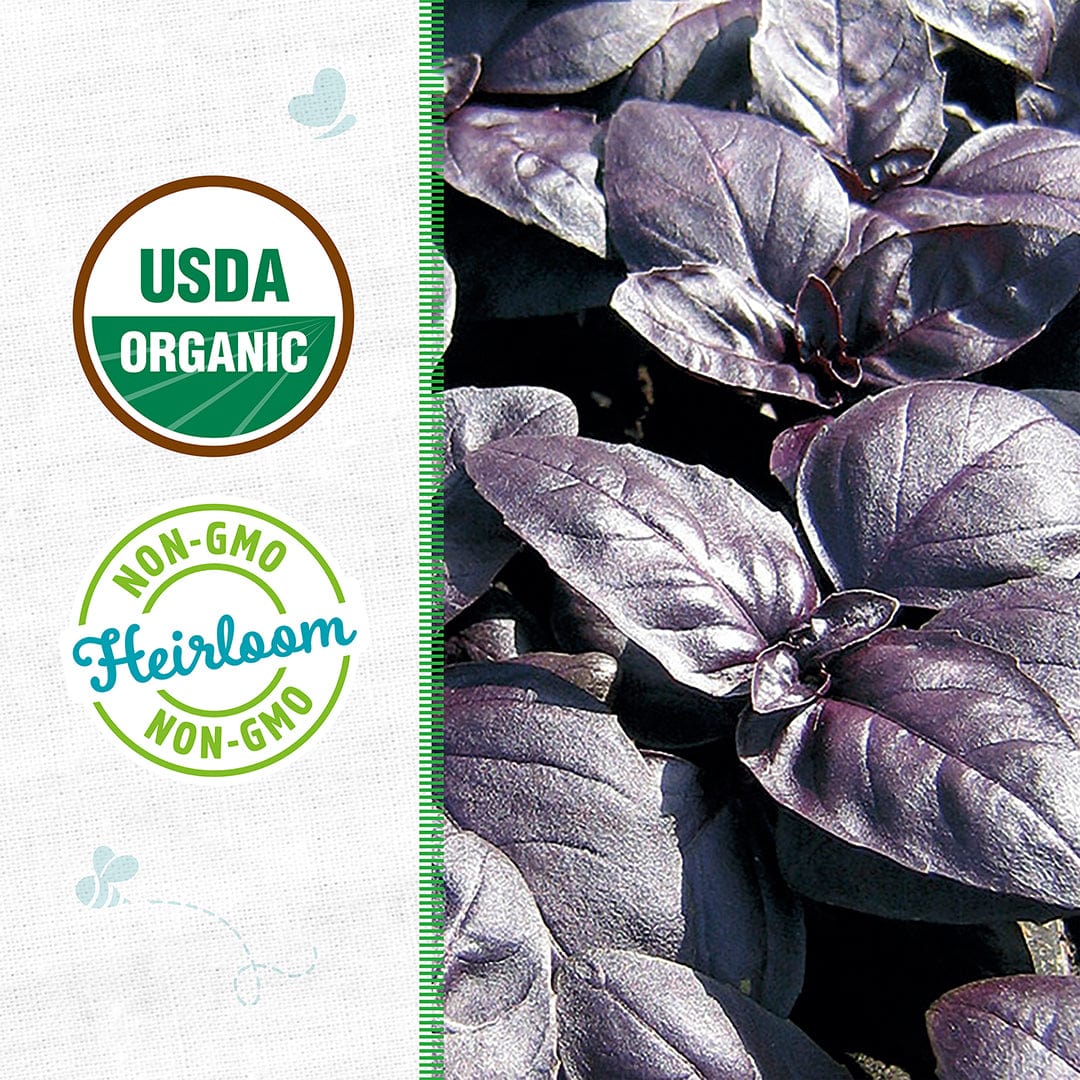
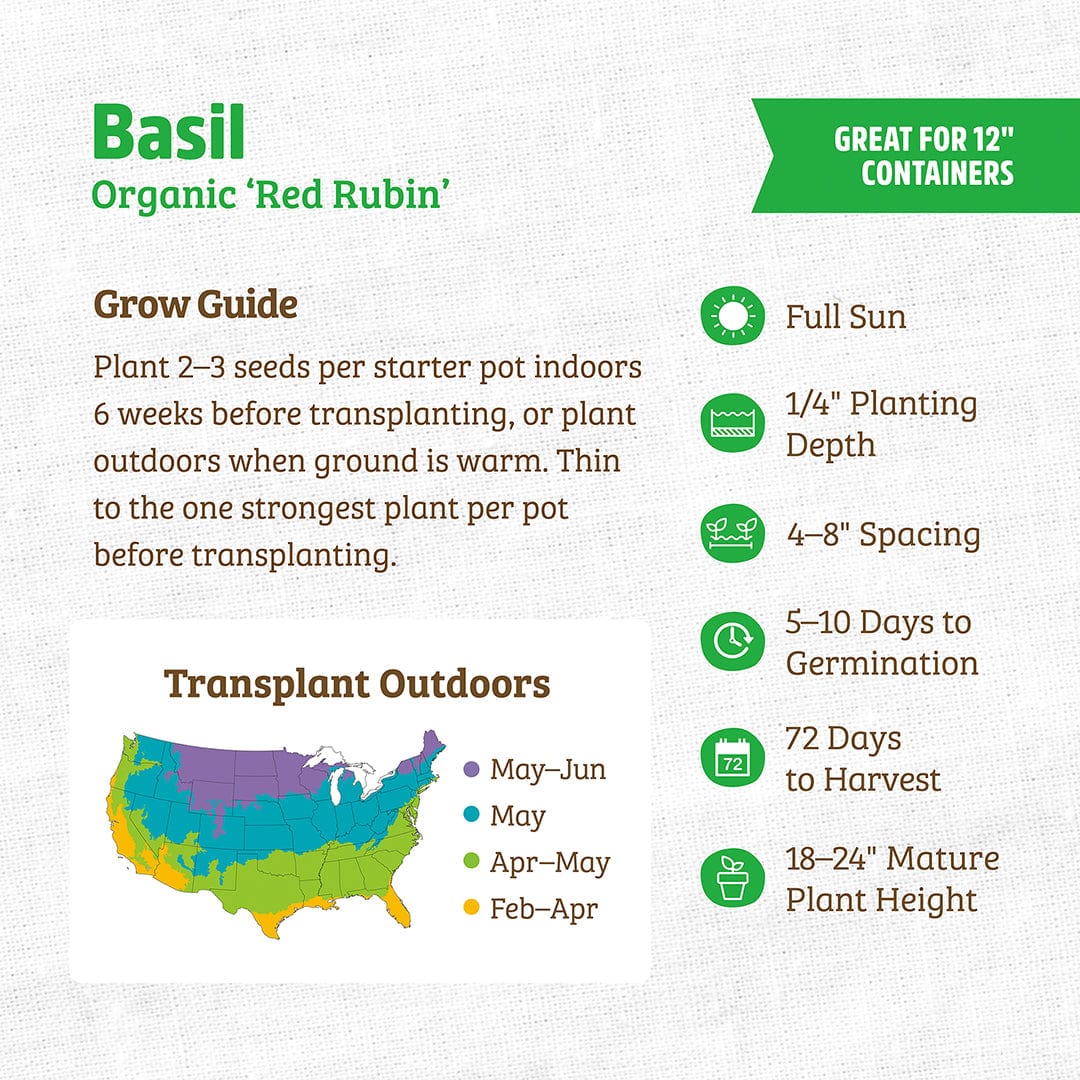
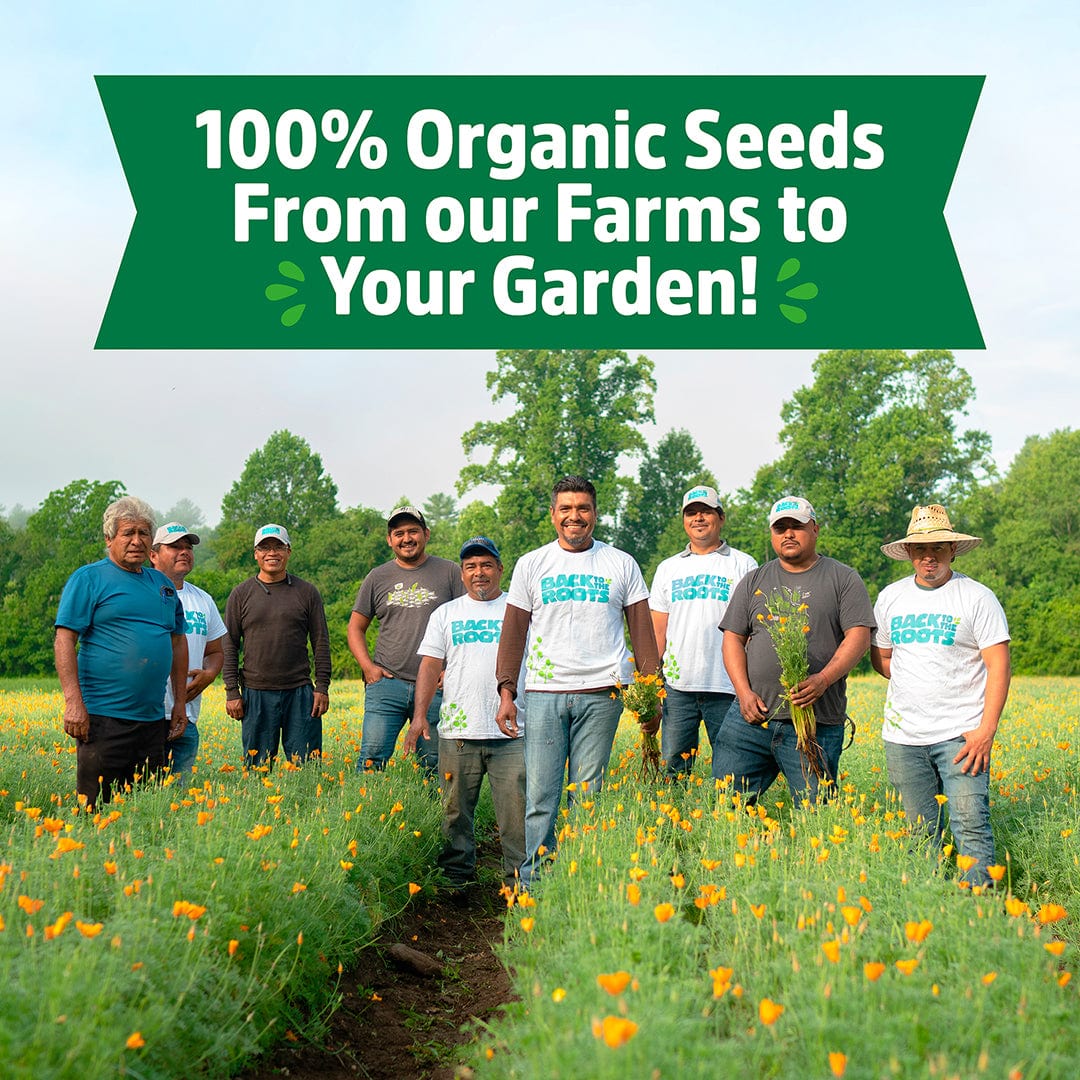

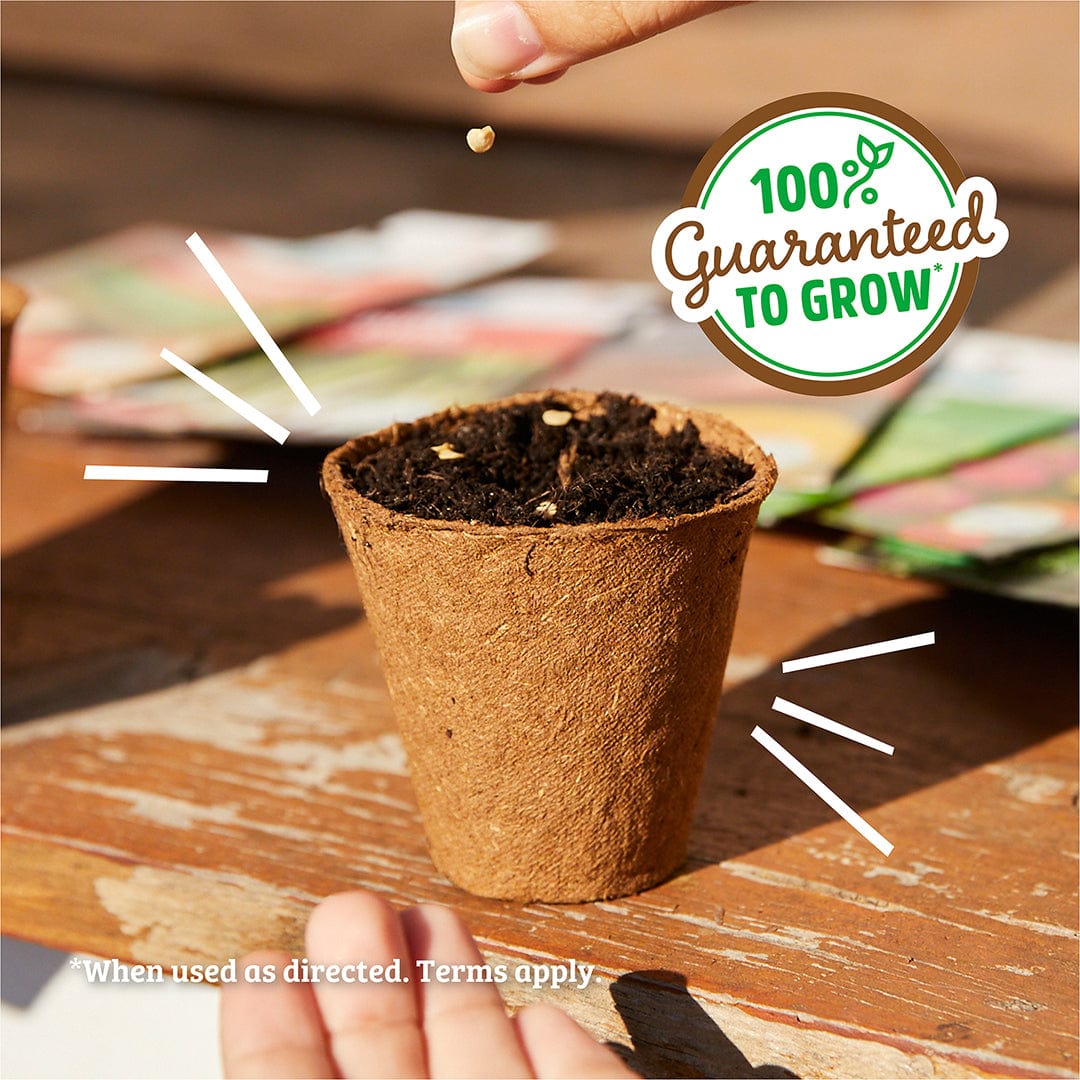

Organic Basil Seeds — 'Red Rubin'
Overview
Basil is a warm-weather herb grown for its aromatic leaves. Often used as a garnish, it adds delicious flavors to dishes. Basil is a source of Vitamins A, C, and K.
Conditions
For soil, use a potting mix that’s tailored for vegetables and herbs. Basil thrives in warm temperatures, optimum being 70–85°F. For the best quality leaves, provide basil with full sun (6 or more hours of direct sunlight) and consistent moisture (don’t let the topsoil become dry to the touch).
Planting
Basil can be planted directly outdoors when the ground is warm, or started indoors in starter pots. Use our grow calendar tool to find specific dates for your region! Seeds germinate in 5–10 days. Basil can be planted outdoors directly or started indoors then transplanted:
For planting outdoors, plant seeds 1/4" deep, 2-3 seeds per inch. Firm the soil over the seeds. Thin plants to 4-8" apart for healthy, full plants.
If starting indoors, plant seeds in starter pots 6 weeks prior to transplanting outdoors. Plant 1/4" deep and keep at 70°F for best germination. Transplant outdoors when seedlings have 3-4 sets of leaves, spacing at 4-8" apart.
Care
After the seedlings have produced their first six leaves, prune (removing a part of a plant to encourage growth) or cut the stem above the second set. This encourages the plants to start branching, resulting in more leaves for harvest. Every time a branch has six to eight leaves, repeat pruning the branches back to their first set of leaves. After about 6 weeks, pinch off the center shoot to prevent early flowering. If flowers do grow, just cut them off.
Pests and Disease
Basil is not as afflicted with pests and disease as other plants, but it is prone to nutrient deficiencies. There are three reasons why basil yellows: too much water, too little sun, and/or not enough nutrients. If basil leaves are yellowing, temporarily stop watering, move the plant to a sunnier location, and feed it with a balanced organic fertilizer.
Harvest
Begin light harvesting after plants have become established at 6-8” tall. Harvest in the early morning, when leaves are at their juiciest. A full harvest should be completed just before the plants start to flower. Leaves are easily bruised when picking, so handle carefully. The best method for storing basil is freezing in an airtight, resealable plastic bag. Freezing will prevent the plant from losing a good portion of its flavor.

Organic Basil Seeds — 'Red Rubin'
